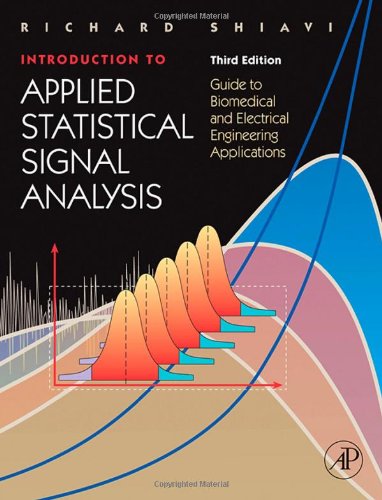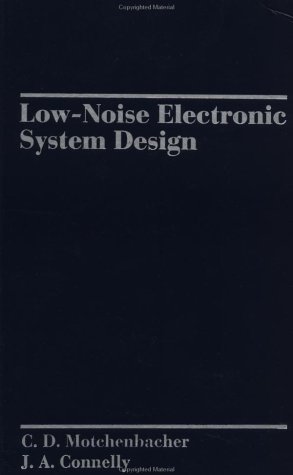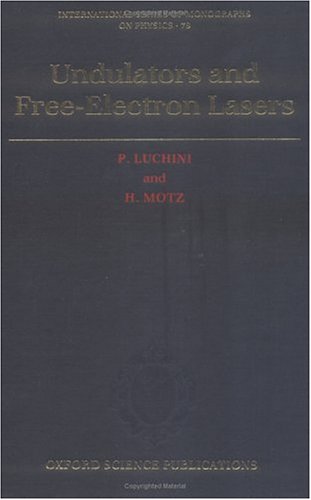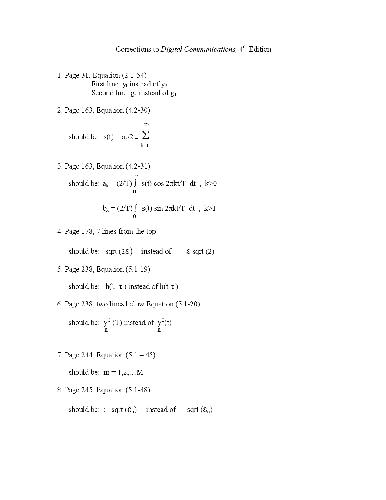Richard Shiavi0120885816, 9780120885817, 9780080467689
Table of contents :
Introduction to Applied Statistical Signal Analysis: Guide to Biomedical and Electrical Engineering Applications……Page 4
Copyright Page……Page 5
Contents……Page 6
Preface……Page 14
Dedication……Page 16
Acknowledgments……Page 18
List of symbols……Page 20
1.1 Introduction……Page 24
1.2.1 Domain Types……Page 26
1.2.2 Amplitude Types……Page 28
1.2.3 Basic Signal Forms……Page 29
1.2.4 The Transformed Domain—The Frequency Domain……Page 31
1.2.5 General Amplitude Properties……Page 32
1.3 Analog to digital conversion……Page 33
1.4.1 Time Domain……Page 34
1.4.2 Frequency Domain……Page 35
References……Page 36
2.1 Introduction……Page 38
2.2 Model development……Page 39
2.3 Generalized least squares……Page 44
2.4 Generalities……Page 46
2.5 Models from linearization……Page 47
2.6 Orthogonal polynomials……Page 51
2.7 Interpolation and extrapolation……Page 56
2.7.1 Lagrange Polynomials……Page 57
2.7.2 Spline Interpolation……Page 61
References……Page 66
Exercises……Page 67
3.1 Introduction……Page 74
3.2.1 Definition……Page 76
3.2.2 Convergence……Page 83
3.3.1 Continuous versus Discrete Time……Page 84
3.3.2 Discrete Time and Frequency……Page 86
3.4.1 Definition Continued……Page 87
3.4.2 Partial Summary of DFT Properties and Theorems……Page 88
3.5 Fourier analysis……Page 91
3.5.1 Frequency Range and Scaling……Page 92
3.5.2 The Effect of Discretizing Frequency……Page 93
3.5.3 The Effect of Truncation……Page 96
3.5.4 Windowing……Page 100
3.5.5 Resolution……Page 102
3.7 Selected applications……Page 105
References……Page 109
Exercises……Page 110
Appendix 3.1 DFT of ionosphere data……Page 115
Appendix 3.2 Review of properties of orthogonal functions……Page 116
Appendix 3.3 The fourier transform……Page 117
Appendix 3.4 Data and spectral windows……Page 121
4.1 Introduction……Page 124
4.2.1 Probability Descriptors……Page 125
4.2.2 Moments of Random Variables……Page 131
4.2.3 Gaussian Random Variable……Page 133
4.3.1 Bivariate Distributions……Page 135
4.3.2 Moments of Bivariate Distributions……Page 136
4.4.1 Sample Moments……Page 138
4.4.2 Significance of the Estimate……Page 142
4.5.1 General Principle for χ2 Approach……Page 145
4.5.2 Detailed Procedure for χ2 Approach……Page 147
4.5.3 Quantile-Quantile Approach……Page 150
4.6.1 Estimate of Correlation……Page 153
4.6.2 Simple Regression Model……Page 155
4.7.1 Convergence……Page 159
4.7.2 Recursion……Page 160
4.7.3 Maximum Likelihood Estimation……Page 161
4.8 Random numbers and signal characteristics……Page 162
4.8.1 Random Number Generation……Page 163
4.8.2 Change of Mean and Variance……Page 164
4.8.3 Density Shaping……Page 165
References……Page 168
Exercises……Page 169
Appendix 4.1 Plots and formulas for five probability density functions……Page 177
5.1 Introduction……Page 178
5.2 Definition of stationarity……Page 179
5.3.1 General Definitions……Page 182
5.3.2 Moments of Stationary Processes……Page 183
5.4 Time averages and ergodicity……Page 185
5.5.1 Estimator Definition……Page 189
5.5.3 Consistency and Ergodicity……Page 191
5.5.4 Sampling Properties……Page 193
5.5.5 Asymptotic Distributions……Page 194
5.6.1 General Moving Average……Page 199
5.6.2 First-Order MA……Page 200
5.6.4 Overview……Page 204
5.7 Assessing stationarity of signals……Page 205
5.7.1 Multiple Segments—Parametric……Page 207
5.7.2 Multiple Segments—Nonparametric……Page 212
References……Page 216
Exercises……Page 217
Appendix 5.1 Variance of autocovariance estimate……Page 220
Appendix 5.2 Stationarity tests……Page 221
6.2.1 Empirical Approach……Page 224
6.2.2 Theoretical Approach……Page 226
6.3.1 Basic Definitions……Page 228
6.3.2 Relationships between Input and Output……Page 231
6.4.1 Moving Average Process……Page 233
6.4.2 Structure with Autoregressive Systems……Page 234
6.4.3 Higher-Order AR Systems……Page 238
6.5 Time series models for spectral density……Page 242
References……Page 248
Exercises……Page 249
7.1 Spectral estimation concepts……Page 252
7.1.1 Developing Procedures……Page 256
7.1.2 Sampling Moments of Estimators……Page 257
7.2.1 Spectral Estimate for White Noise……Page 262
7.2.2 Sampling Properties for General Random Processes……Page 265
7.3.1 Periodogram Averaging……Page 267
7.3.2 Confidence Limits……Page 271
7.3.3 Summary of Procedure for Spectral Averaging……Page 281
7.3.5 Spectral Smoothing……Page 282
7.3.6 Additional Applications……Page 286
7.4.1 Spectral and Lag Windows……Page 287
7.4.2 Important Details for Using FFT Algorithms……Page 289
7.4.3 Statistical Characteristics of BT Approach……Page 290
7.5 Autocorrelation estimation……Page 298
References……Page 300
Exercises……Page 301
Appendix 7.1 Variance of periodogram……Page 304
Appendix 7.2 Proof of variance of BT spectral smoothing……Page 306
Appendix 7.3 Window characteristics……Page 307
Appendix 7.4 Lag window functions……Page 308
Appendix 7.5 Spectral estimates from smoothing……Page 309
8.1 Introduction……Page 310
8.2 Model development……Page 311
8.3.1 Basic Concepts……Page 316
8.3.2 Solution of General Model……Page 320
8.3.3 Model Order……Page 323
8.3.4 Levinson-Durbin Algorithm……Page 328
8.3.5 Burg Method……Page 332
8.3.6 Summary of Signal Modeling……Page 336
8.4.1 Definition and Properties……Page 337
8.4.2 Statistical Properties……Page 341
8.4.3 Other Spectral Estimation Methods……Page 343
8.4.4 Comparison of Nonparametric and Parametric Methods……Page 345
References……Page 346
Exercises……Page 347
Appendix 8.1 Matrix form of Levinson-Durbin recursion……Page 350
9.1 Introduction……Page 354
9.2.1 Theoretical Function……Page 356
9.2.2 Estimators……Page 357
9.3 Detection of time-limited signals……Page 362
9.3.1 Basic Concepts……Page 363
9.3.2 Application of Pulse Detection……Page 365
9.3.3 Random Signals……Page 366
9.3.4 Time Difference of Arrival……Page 368
9.3.6 Procedure for Estimation……Page 370
9.4.1 Definition and Properties……Page 372
9.4.2 Properties of Cross Spectral Estimators……Page 374
9.5 Applications……Page 377
9.6.1 Coherence Estimators……Page 378
9.6.2 Statistical Properties of Estimators……Page 381
9.6.3 Confidence Limits……Page 382
9.6.5 Application……Page 385
References……Page 387
Exercises……Page 388
10.1.1 Introduction……Page 390
10.1.2 Hilbert Transform……Page 391
10.1.3 Analytic Signal……Page 393
10.1.4 Discrete Hilbert Transform……Page 396
10.2.1 Concept……Page 398
10.2.2 Nerve Activity and the Spike Density Function……Page 401
References……Page 405
Exercises……Page 406
Table A Values of the Standardized Normal cdf Φ(z)……Page 408
Table B Student’s t Distribution……Page 410
Table C Chi-Square Distribution……Page 411
Table D Critical Points for the Q-Q Plot Correlation Coefficient Test for Normality……Page 412
Table E F Distribution Significance Limit for 97.5th Percentile……Page 413
Table F Percentage Points of Run Distribution……Page 415
Index……Page 416







Reviews
There are no reviews yet.